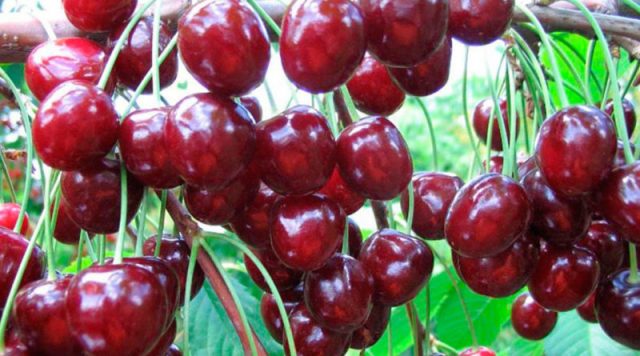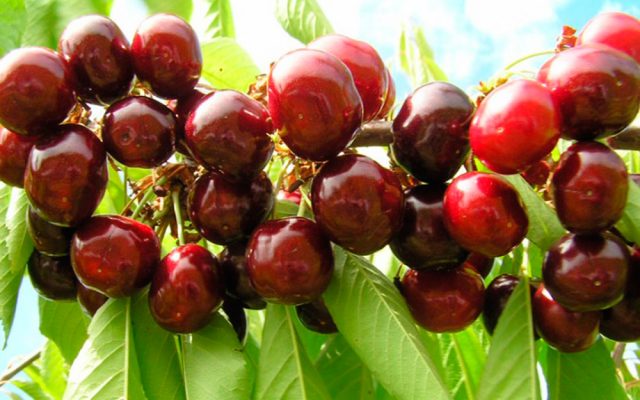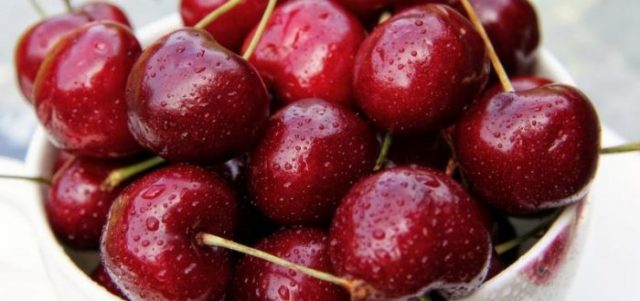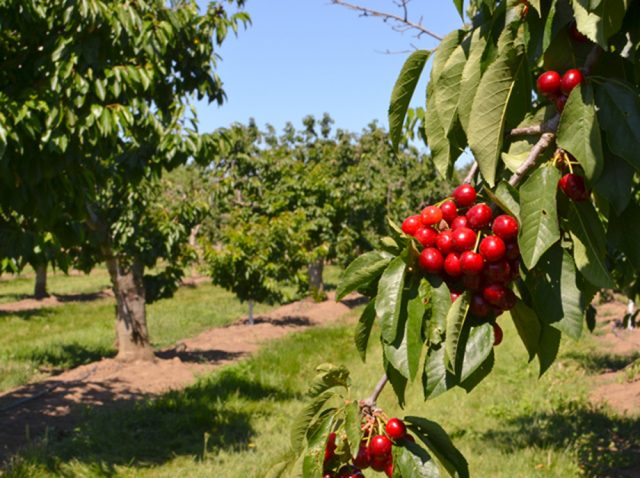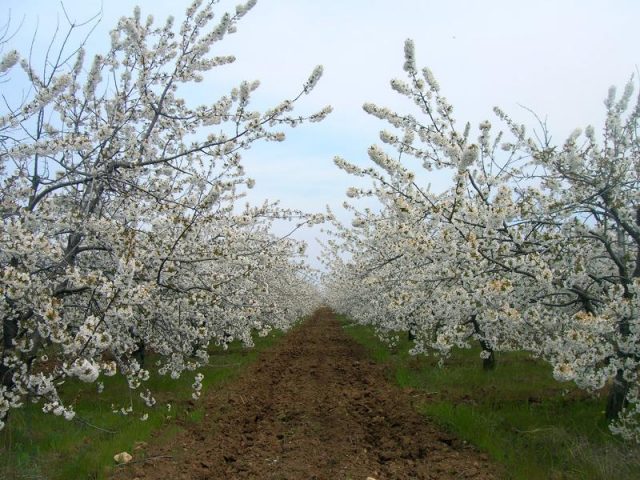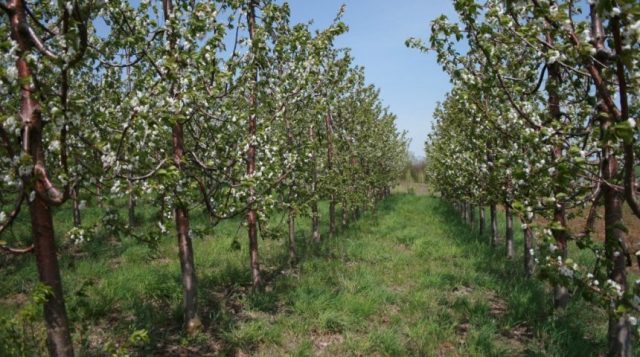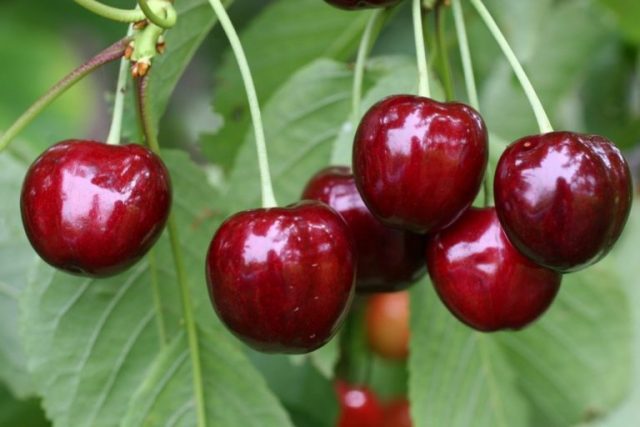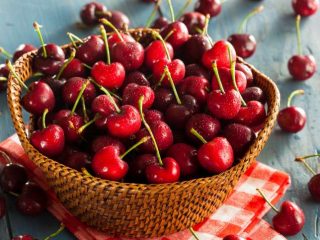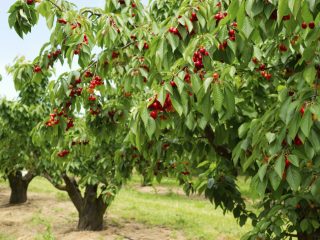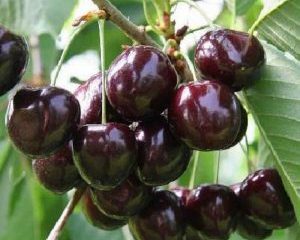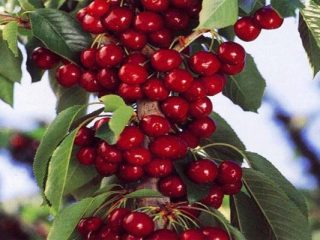Content
Cherry trees are some of the most popular among gardeners. Sweet cherry Rodina is a variety known for its high frost resistance and juicy fruits. It is interesting to know more about the peculiarities of this tree.
Breeding history of the variety
The Rodina variety was obtained in 1994 in a rather unusual way - with the help of electromagnetic radiation. The source was the cherry Slava Zhukova, and the breeders of the Research Institute I.V. Michurin. At the moment, the variety is still undergoing state variety testing.
Description of the cherry variety Rodina
Outwardly, the sweet cherry variety is of medium height, no more than 3 - 4 m, a tree with a dense pyramidal crown. The shoots of the Motherland are long, medium in thickness, straight, covered with a smooth red-brown bark. The leaves of the fruit tree are green, relatively small, with sharp denticles along the edge of the leaf. The petioles are short, and the flowers are white and large, appearing on the branches in May in abundance.
Sweet cherry Rodina bears rather large fruits weighing about 5 g, covered with a dark, almost black burgundy skin. In shape, the berries of the tree are round-heart-shaped, with a small depression in the middle. The sweet cherry has a sweet taste with a noticeable sourness, according to the tasting scale it is estimated at 4.5 points out of the maximum possible 5. The berries are universal - they are suitable both for quick use and for transportation.
The best region for planting sweet cherries Homeland is considered to be the middle zone of Russia - the Central Black Earth Region. However, this variety was bred as frost-resistant, therefore it is recommended to plant it, including in the northern regions. It tolerates low temperatures and weather changes well, it is not harmed by sudden spring frosts.
Characteristics of the variety
To understand how well a variety is suitable for growing in specific conditions, it is necessary to study its characteristics. The characteristics of Rodina cherries look pretty attractive to gardeners.
Frost resistance of sweet cherry Rodina
The variety has increased resistance to negative temperatures. Among the recommended areas for growing a fruit tree are Siberia and even the countries of Scandinavia - the variety tolerates temperatures below - 30 degrees. Also, the Motherland is experiencing return frosts well in the spring, especially dangerous for fruit trees. Sudden drops in temperature do not affect the yield and fruiting of the plant.
Cherry pollinators Rodina
The variety is self-fertile and cannot produce a bountiful harvest on its own, without pollinators located in the neighborhood. In order to get fruits from the Motherland cherry, it is necessary to plant other cherry varieties with similar flowering periods next to it. These varieties can be:
- Story - winter-hardy tree with flowering in early May and harvest in late May - early June, bearing large red-burgundy fruits.
- Yaroslavna - the cherry blossoms at the same time as the Rodina variety and bears fruit in early summer.Among the advantages of the variety are not only delicious dark red fruits up to 7 g each, but also excellent resistance to frost, drought and disease.
- Valery Chkalov - frost-resistant sweet cherry that blooms already in late April - early May and yields harvest no later than mid-June. Produces dark red sweet fruits weighing up to 8 g each.
Productivity and fruiting
The Rodina variety belongs to trees with early fruit ripening. With proper care and normal development of the tree, you can get fruits already in late May or early June. The yield of the variety is considered abundant - up to 30 kg of berries from one tree. For the first time, the plant bears fruit in 4 or 5 years after rooting in the garden and after that pleases with large harvests annually.
Scope of berries
The cherry fruits of this variety belong to the category of universal ones. This means that they can be consumed fresh, in compotes and preserves, as an ingredient for baking and desserts. The berries are well transported, so they can be sent for sale if desired.
Disease and pest resistance
The variety has strong immunity and is almost not susceptible to common diseases. In particular, there is a high resistance to coccomycosis. This fungal infection often infects the leaves of fruit trees, leaving ugly brown spots on them and leading to curling and drying of the foliage.
At the same time, garden pests such as cherry flies or aphids are still dangerous for the sweet cherry Motherland. Therefore, the condition of the tree must be monitored very carefully and do not forget about high-quality prevention.
Advantages and disadvantages of the variety
Among the advantages of sweet cherries Rodina can be noted:
- high yield and good transportability of fruits - this allows you to use them not only for personal, but also for commercial purposes;
- increased resistance to low temperatures - the plant is great for breeding in cold regions;
- good immunity to diseases, especially often affecting fruit trees - it is enough just to care for cherries.
The only disadvantage is the self-infertility of the variety and the need to plant pollinators nearby. However, if there are other early flowering cherries in the garden, this feature will not bring any problems.
Landing features
Cherry called Rodina is planted in the same way as most other varieties of cherries. However, it will be useful to remember the basic rules.
Recommended timing
Both spring and autumn are considered permissible dates for planting cherries. But in fact, autumn planting is practiced in southern regions with mild winters. In the middle lane and in the north, it is better to plant cherries in the spring, shortly before the growing season and after frosts - this will save the seedling from freezing.
Choosing the right place
Like any sweet cherry, the Rodina variety prefers open, sunny places. It is better to choose the soil light, with good ventilation. Loam and sandy loam are ideal.
What crops can and cannot be planted nearby
The optimal neighbors for cherries Homeland are cherry trees or other cherries that can take on the role of pollinators. But apple trees and pears should not be planted in the immediate vicinity.
Selection and preparation of planting material
The main and practically the only requirement for a sweet cherry seedling Homeland is the presence of dense, healthy, intact roots. Just before planting, you can hold them in the water for a while.
Landing algorithm
Planting a young plant is quite standard.
- The seedling hole should be large enough - about twice the volume of the roots.
- Organic fertilizers mixed with the soil must be placed at the bottom of the hole - they will contribute to the rapid growth of the tree.
- The seedling is lowered into a hole, about half filled with earth, and covered with earth to the top on top of the roots. Then 2 - 4 buckets of water are immediately brought under the trunk, and then the earth is mulched in a circle.
Cherry follow-up care
It is quite simple to care for the sweet cherry Motherland - it requires minimal attention.
- You need to cut the tree to a minimum - once a year, shorten the shoots by a quarter after fruiting, remove dry, twisted, unhealthy branches.
- Watering of cherries is carried out depending on the weather. It is imperative to supply the tree with moisture before flowering, after it, before fruiting and shortly before the arrival of winter - each time 3-4 buckets of water under the trunk. The rest of the cherry will have enough natural precipitation. The main thing is to prevent complete drying out or excessive waterlogging of the soil.
- During the first 3 years of growth, the seedling has enough fertilizers laid in the planting pit. After 4 years of life, you can enter an annual feeding - nitrogenous substances in the spring, potassium in the summer and fluorine in the fall.
In mid-autumn, the tree needs to be watered for the last time, mulch the soil around the trunk and treat the cherries with a fluorine-containing solution. So that the tree does not freeze over the winter and does not suffer from rodents, it is recommended to trample the snow tightly around the trunk, and cover the trunk with insulating material.
Diseases and pests, methods of control and prevention
The Rodina variety is quite resistant to ailments and pests. But some diseases can affect him too, namely:
- clasterosporium disease;
- phyllostictosis;
- cherry cancer.
In all cases, it is necessary to urgently trim all unhealthy parts, and process the sections with copper sulfate. As a prophylaxis of diseases in the spring, the crown and trunk are sprayed with a 1% solution of Bordeaux liquid.
In addition, fruit insects, such as weevils, cherry flies, and aphids, harm cherries. The best protection against them will be the timely removal of all dry and decaying parts, sanitary cleaning of the soil near the trunk. If pests nevertheless appear on the leaves or in the fruits, they need to be dealt with with insecticidal agents.
Conclusion
Sweet cherry Rodina is an unpretentious and easy-to-care fruit variety. With elementary care, the tree will decorate the garden and will regularly bring very bountiful harvests.
Reviews of summer residents about cherries Rodina
